Can you imagine our present or future without important metals such as silver, gold, titanium, and iron? It wouldn’t be much to think about. These metals played an important role in shaping our past and are now working as a foundation from which we are building our future.
Almost every mineral or metal found on Earth is valuable for humans in one way or the other, but only a few metals are of extreme importance. Pure metals are usually soft or weak to be useful, however, the inclusion of other metals and impurities makes them much stronger. Below, we have compiled a list of strongest metals found on Earth.
Before we get started, there are a couple of things that you should get familiar with;
Young’s modulus: It’s a measure of material’s elasticity, or simply the relationship between stress and strain.
Yield Strength: Yield strength/stress defines the maximum stress limit of material after which is starts showing plastic behavior.
Note: In this list, we haven’t included any major alloys, but impure versions of natural metals are taken into account.
Table of Contents
12. Lead
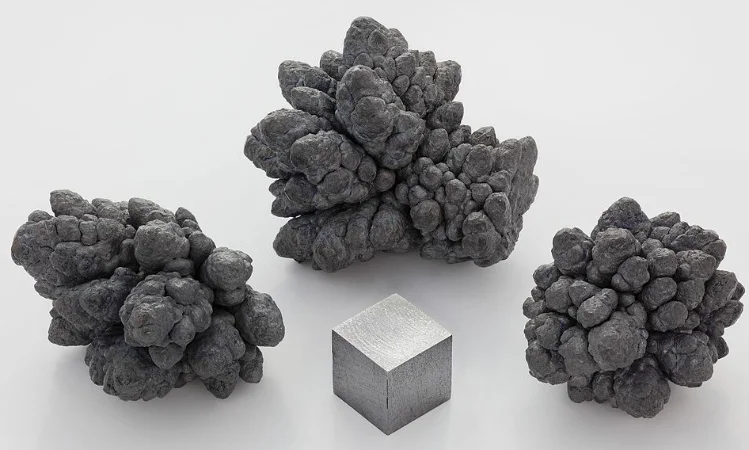 Lead electrolytic and a one cm3
Lead electrolytic and a one cm3
Young’s Modulus: 16 GPa
Tensile Strength:12-17 MPa
Even though lead is relatively soft, its low melting point and high corrosion resistance make it a highly desirable element across various industries. On Earth, lead is one of the commonly found elements alongside sulfur. It is now a well-accepted fact that lead was known to humans, even before 6000 BCE, and was probably used for metal smelting.
The most common use of lead is for manufacturing various types of alloys. It is also used as a coloring agent, oxidant, in plastics, candles, glass, and semiconductors. It has been used to make bullets since the middle ages.
11. Tin
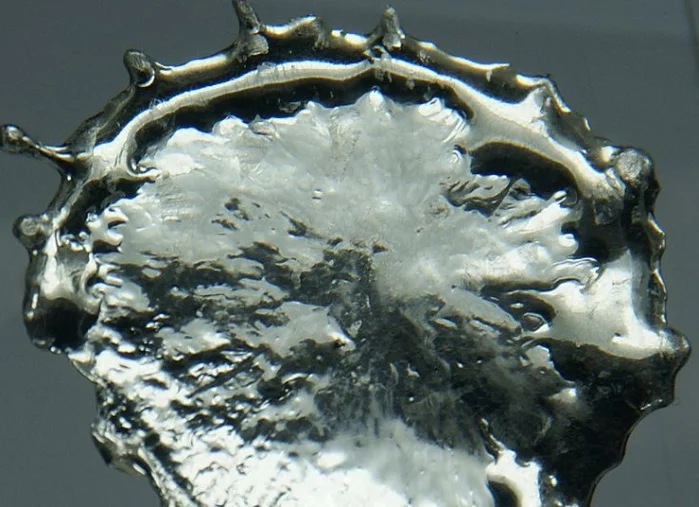 Solidified Molten Tin | Image Courtesy: Jurii
Solidified Molten Tin | Image Courtesy: Jurii
Young’s Modulus: 50 GPa
Yield Strength: 9–14 MPa
Tensile Strength: 15 MPa
Physically, tin can be characterized as a soft, silvery-white metal, which is both ductile and malleable. At room temperatures, it remains largely unaffected by corrosion and oxidation.
Tin is most widely used in alloys, a notable example being tin-lead soft solders, which normally consists of 60 percent or more tin. Due to its low toxicity, tin-plated metal can is popular in the food packaging industry.
It is the 49th most abundant naturally occurring element on earth.
10. Aluminum
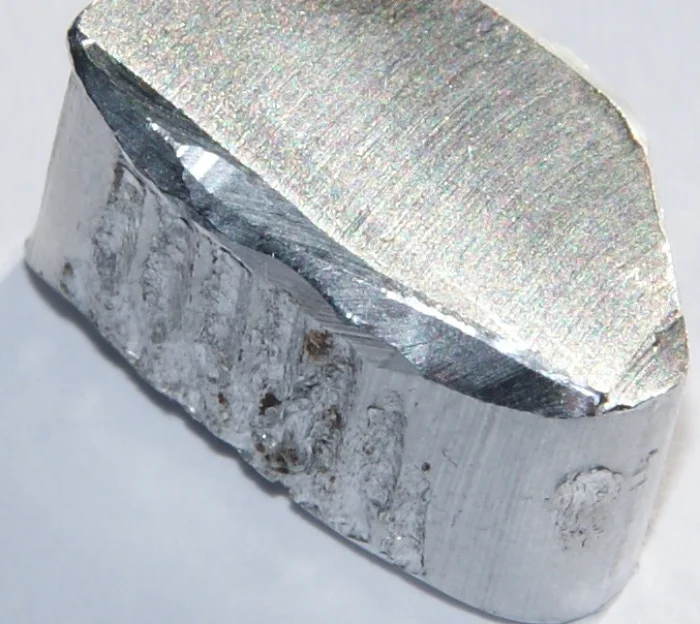 A chunk of aluminum
A chunk of aluminum
Young’s Modulus: 70 GPa
Yield Strength: 15–20 MPa
Tensile Strength: 40–50 MPa
Aluminum has specific qualities that make it an important commodity to modern society. It is one of the most extensively used non-ferrous metal in the world. About 8% of the earth’s crust consists of aluminum, while its concentration in the Solar System is 3.15 ppm (parts per million).
Due to its low density and resistance to corrosion, aluminum is a key element in the aerospace and infrastructure industry. While pure aluminum has a yield strength of about 15-20 MPa, its alloys are much stronger and have yield strengths from 200 MPa to 600 MPa.
9. Gold
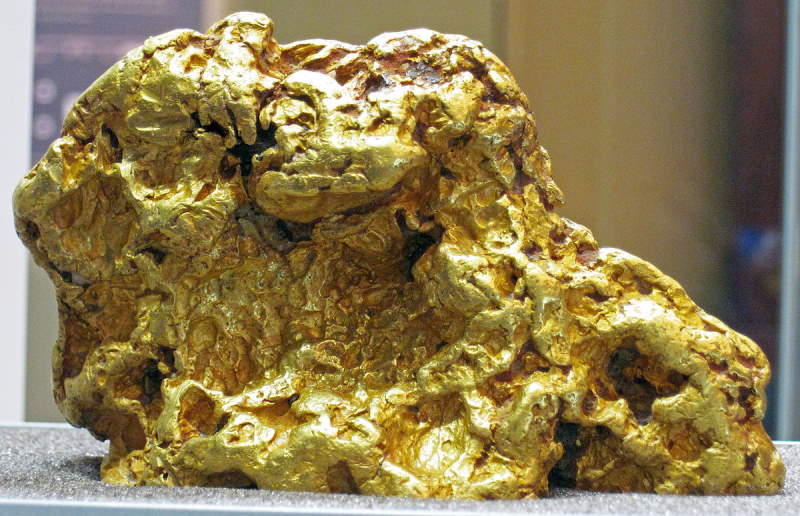 Gold nugget from Australia | Image Courtesy: James St. John/Flickr
Gold nugget from Australia | Image Courtesy: James St. John/Flickr
Young’s Modulus: 70 GPa
Tensile strength: 100 MPa
Gold is one of the most precious and sought after minerals on earth. It is both highly ductile and malleable. Our current scientific understanding is that gold and other heavy elements may have forged in supernovas and other cosmic quarries.
The metal is widely utilized in jewelry, electronics, and medicine. Historically, gold has been utilized for monetary use. About 10% of the world’s total gold production goes to the electronic/semiconductor industry, where it is used to fabricate corrosion-resistant components.
8. Silver
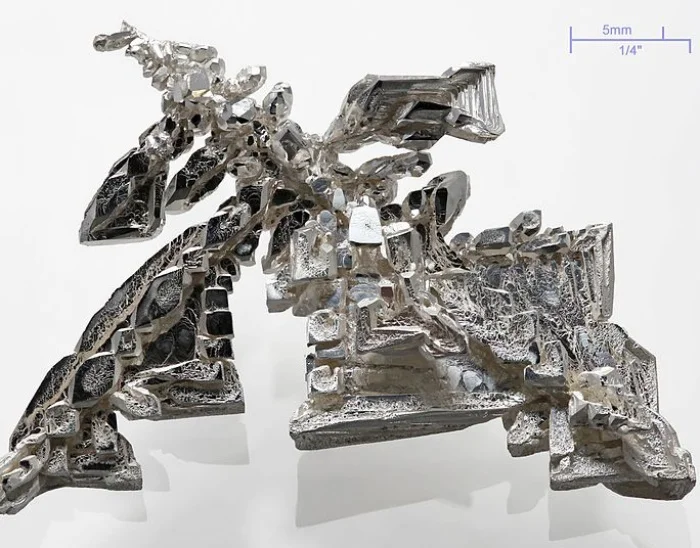 Silver
Silver
Young’s Modulus: 83 GPa
Tensile Strength: 170 MPa
One of the precious metals, silver is vital for many high-value industries. It has the highest electrical and thermal conductivity of any metal, even copper. Due to higher costs, the metal is used only in a few industries such as electronics. The silver plating on various circuits and semiconductor devices are essential for their proper functioning.
Apart from electronics and jewelry, silver is readily used as an antibiotic coating in medical appliances. It is also a preferred catalyst for the most oxidation process. About 13,000 tons of silver were used to enrich uranium during the Second World War.
7. Titanium
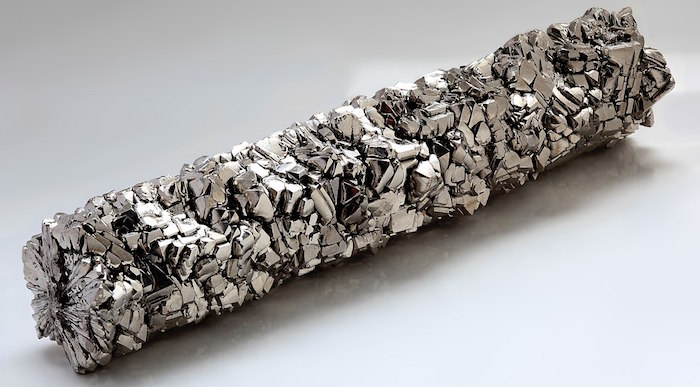
Young’s Modulus: 120 GPa
Yield Strength: 100–225 MPa
Tensile Strength: 246–370 MPa
Titanium is one of the ten most abundant metal in the earth’s crust and is found in most igneous rocks as oxides. The metal has a high strength-to-weight ratio, high melting point, and relatively low electrical conductivity as compared to most other metals.
Titanium is mostly used as an alloying element in different types of alloys to achieve greater strength and power. Due to its high corrosion resistance property and tensile strength, titanium has become a staple material in the aerospace and shipping industry.
6. Chromium
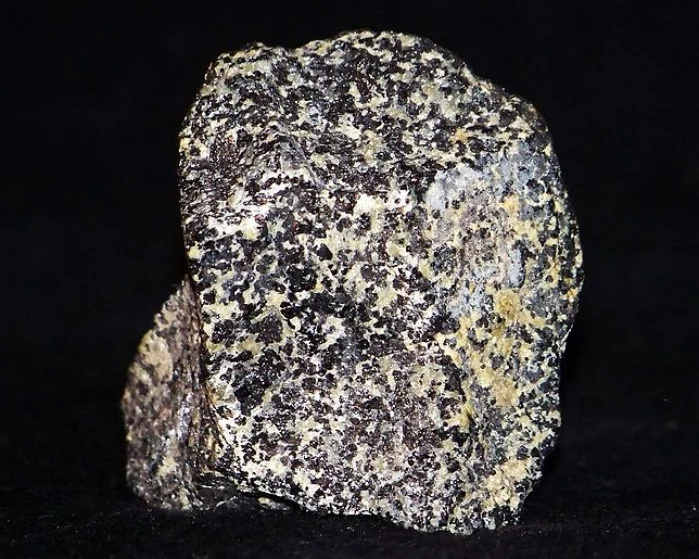 Chromite Ore
Chromite Ore
Young’s Modulus: 140 GPa
Tensile Strength: 282 MPa
The is hard, lustrous and has one of the highest melting points of any metal found on earth’s crust. Chromium is known for its unusual magnetic properties; it exhibits antiferromagnetic properties at room temperatures but above 38 °C it changes to paramagnetic metal.
Chromium is the 22nd most abundant element found on Earth and is mostly extracted from earth minerals such as Kimberlite.
Almost 85 percent of mined chromium is accounted for producing metal alloys and the rest is used for dying, coating, producing refractory material and as a catalyst for processing hydrocarbons.
5. Copper
 Old Copper utensils in Jerusalem
Old Copper utensils in Jerusalem
Young’s Modulus: 130 GPa
Yield Strength: 117 MPa
Tensile Strength: 210 MPa
Copper is one of the very few elements that occur naturally in a usable metallic form that doesn’t need to be extracted from any mineral ore. Due to this characteristic, humans were able to use cooper even before 7000 B.C. Then in 3500 B.C, cooper was alloyed with tin to produce bronze. It was the first time in human history that any metal was alloyed with another.
Do you know, an average human carries about 1.4 to 2.1 mg of copper per kg of its weight. Excessive copper accumulation in the liver can lead to severe liver damage and neuropsychiatric symptoms. This condition is known as Wilson’s disease.
A large portion of the world’s total copper production is used in cable wires and electrical circuits. Other applications of copper include plumbing and roofing.
4. Nickel
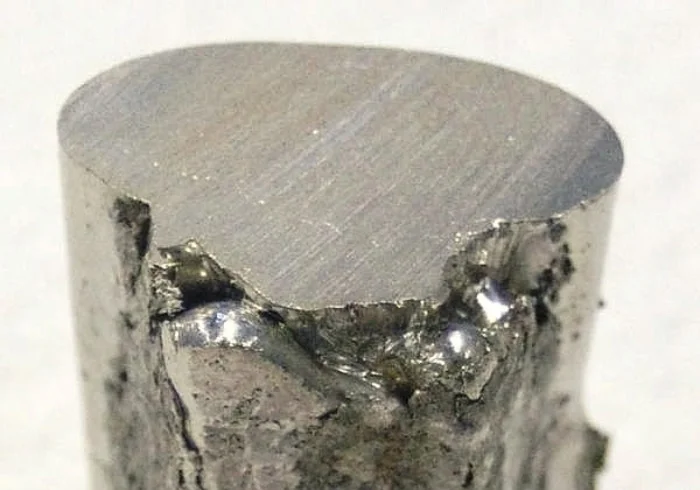 A Nickel Bar
A Nickel Bar
Young’s Modulus: 170 GPa
Yield Strength: 140–350 MPa
Tensile Strength: 140–195 MPa
Nickel, a transition metal, is vital for the production of alloys as nearly 68 percent of the world’s total nickel output is used in stainless steel. Other uses of nickel include electroplating, production of rechargeable batteries and coinage.
In nature, nickel occurs mostly in minerals with high amounts of sulfur or arsenic such as nickeline, pentlandite, and millerite. Indonesia is the world’s highest nickel producer followed by the Philippines and Russia.
Nickel also has a biological role in humans and microorganisms including fungi and eubacteria. A research conducted in 2014 found out that patients suffering from type 2 diabetes present with a high concentration of nickel in the blood compared to those who don’t have the disease.
3. Tantalum
 Tantalite Ore
Tantalite Ore
Young’s Modulus: 186 GPa
Yield Strength: 180 MPa
Tensile Strength: 200 MPa
Apart from the fact that tantalum is a strong metal, it is also one of the densest materials on Earth. Tantalum is known for its ability to resist corrosion so much so that it can withstand highly corrosive aqua regia below 150°C.
The element belongs to a particular group of metals, which are extremely resistant to heat, known as refractory metals. These metal, though in small proportions, are widely used in production of various alloys.
Read: 15 Densest Materials on Earth | Volumetric Mass Density
Tantalum is also used in the electronics sector to produce durable, heavy-duty capacitors for telephones, personal computers, cameras and various devices for automobiles.
2. Iron/Steel
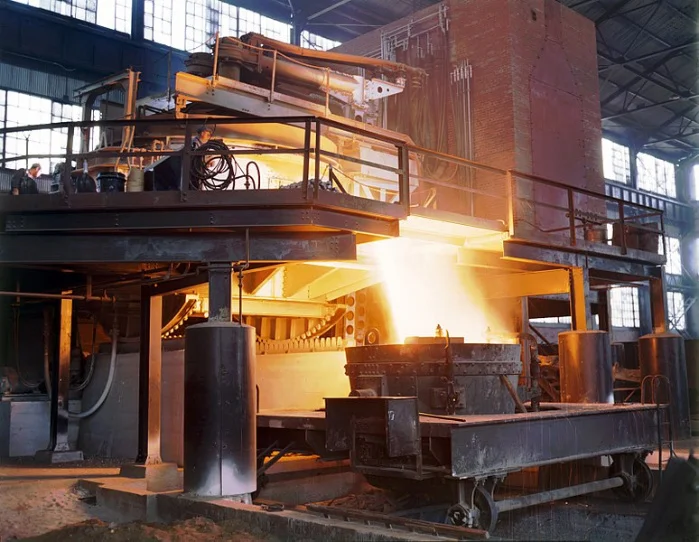 A steel Furnace
A steel Furnace
Young’s Modulus: 186 GPa
Yield Strength: 180 MPa
Tensile Strength: 200 MPa
Iron constitutes most of the earth’s core and is the fourth most abundant element on the crust. The element in its pure form is weak but is readily combined with other elements to produce iron alloys such as cast iron and steel due to their robustness and relatively low cost.
Modern steels can be broadly categorized into four varieties; carbon steel, low alloy steel, high strength low alloy steel, and alloy steel. While carbon steel is composed mostly of iron and carbon, the other steel types carry varying amounts of other elements such as manganese, molybdenum, chromium, or nickel.
Steel is most widely used in heavy equipment and the construction industry. Despite the emergence of aluminum, steel remains vital for manufacturing car bodies.
1. Tungsten
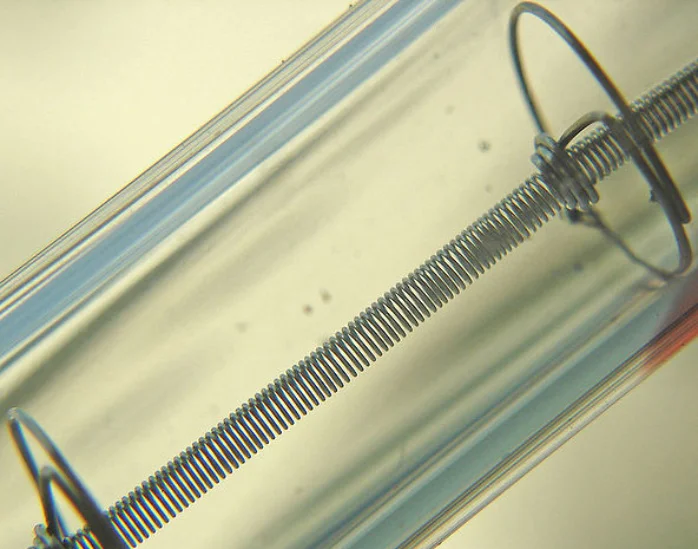 Tungsten Filament inside a lamp
Tungsten Filament inside a lamp
Young’s Modulus: 411 GPa
Yield Strength: 550 MPa
Tensile Strength: 550–620 MPa
Tungsten is known for its highest melting point and unparalleled robustness. It was discovered in the form of acid for the very first time in 1781 by Swedish chemist Carl Scheele.
Further studies lead two Spanish scientists Fausto and Jose Elhuyar to discover the same acid from the Wolframite mineral from which they later isolated tungsten with the help of charcoal.
Read: 26 Strongest Materials Known To Human
Apart from its extensive use in bulb filaments, tungsten’s ability to function under extreme heat makes it one of the most desirable elements for the arms industry.
During World War II, it had a major part in initiating economic and political dealings among the European countries. As the largest tungsten producer in that region, Portugal gained partial importance from both sides.
The metal is also used to build hard alloys and in the aerospace industry to make rocket nozzles.


